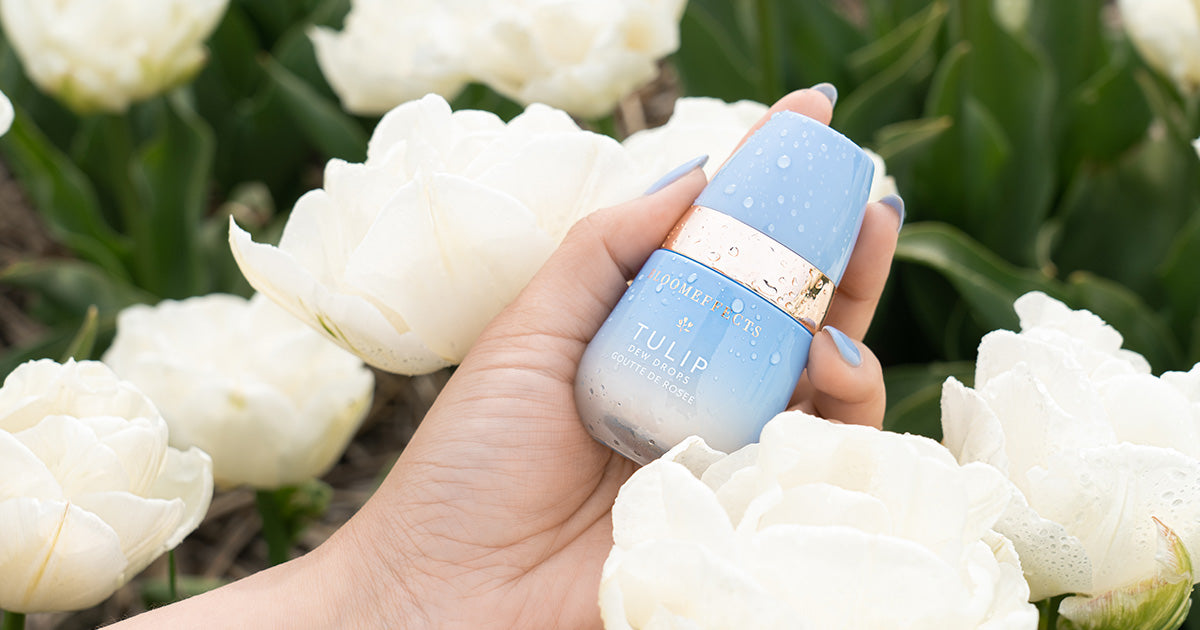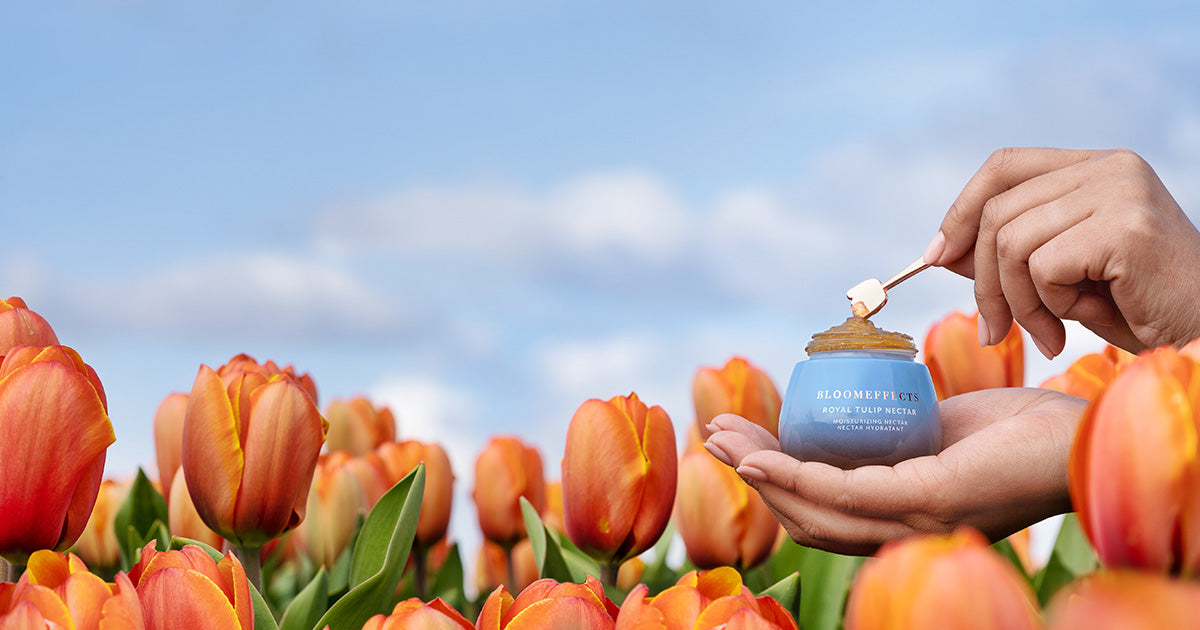Roses are red, violets are blue,
Tulips are superior, you’ll soon agree too…
You don’t have to be a beauty expert to know how prevalent the rose is within the cosmetic and skincare industry. From mass to prestige brands, rose and rose associated ingredients are used in a majority of beauty brands. But over the past few years the shift in preference for more natural products has fostered evermore creative thinking as beauty brands, such as ourselves, endeavour to meet these needs by exploring nature and all it has to offer.
So does the science behind the rose really stack up to its reputation? New research suggests that other less common or prevalent flowers could actually be more effective when it comes to helping your skin!
Enter: the tulip.

A Dutch flower so beautiful and beloved that it secured itself as a national symbol and its fields have garnered international attention. However, our understanding of the tulips' incredible qualities was limited until recently when Bloomeffects founder Kim van Haaster commissioned research with their government grant through Leiden University and Holland Biodiversity.
They conducted a series of analyses to determine what the hard science reveals about the rose’s true value compared to that of the tulip. The findings perfectly display how the tulip not only matches but surpasses the benefits the rose offers.
1. The tulip is richer in organic acids
Organic acids are naturally occurring compounds with strong antioxidant and antimicrobial properties which help to target the appearance of aging by reducing hyperpigmentation, age spots, acne, pore appearance, fine lines, and wrinkles. Moreover, their biological properties facilitate gentle but effective cleansing, contribute to skin’s hydration and provide soothing sensation upon skin application.
2. The tulip is richer in fatty acids
Tulips go above and beyond the rose when it comes to organic and fatty acids! They contain 2 times as many organic acids and 4.5 times as many fatty acids as the rose. Previous research on the benefits of organic acids found in the tulip shows that they have anti-aging qualities, pore-purging properties, as well as antioxidant and hydrating effects.
Among the multitude of fatty acids that tulips contain compared to the rose, three are well-recognized fatty acids that have been reported to help heal and nourish the skin (Succinic acid, Decanoic acid, and Lauric acid). They have been linked to boosting moisturization as well as easing skin sensitivities, including eczema and acne.
But it doesn’t end there… The tulip contains a multifaceted skin lightening acid which has been found to improve the skin’s overall condition as well as help recovery from UV induced skin injuries.
3. The tulip has skin protective properties
The research also showed that tulips and roses contain a very diverse amount of flavonoids which are a class of compounds that possess skin-healing, anti-inflammatory properties as well as a high antioxidant content to neutralize free radical damage. They are a potent source of skin protective properties which has been found to reduce the effects of UV-radiation, allergens and even carcinogens.
4. The tulip has more amino acids
When comparing the amino acid content of roses and tulips it was found that tulips contain a higher overall amount. Amino acids are known to be beneficial as they are said to be skin brightening, hydrating, protective against environmental toxins, and help build skin density.
The era of the rose is coming to an end as the tulip steps up to claim the skin care throne. It’s remarkably replenishing as well as skin-fortifying qualities far exceed the skin care promises that the rose offers. We have uncovered clear differences between the rose and the tulip in their skin-nourishing core components. When combined with previous scientific research the tulip’s superiority is undeniable as it possesses more compounds with exceptionally strong antioxidant, moisturising as well as anti-aging effects.

This untapped source of nutrients offers an abundance of benefits for the skin and in this way it is revolutionizing clean beauty. The most exciting part of this research is there is still so much more to explore and a lot of space for new discoveries, an endeavour that Bloomeffects is committed to undertaking.


